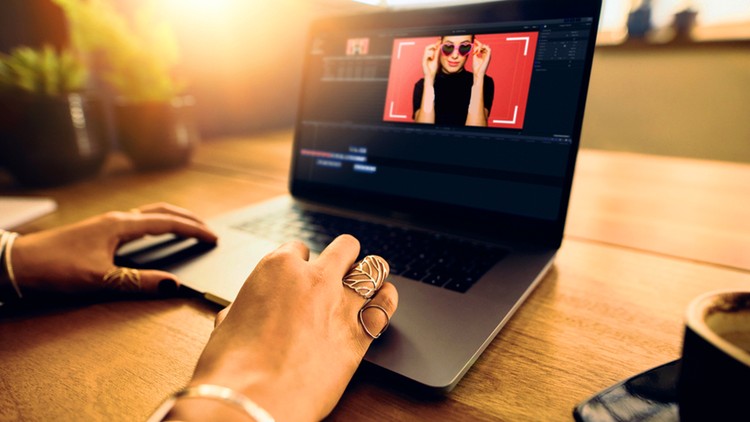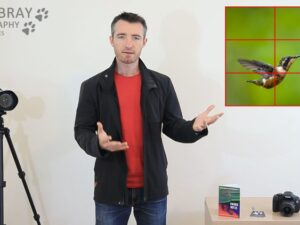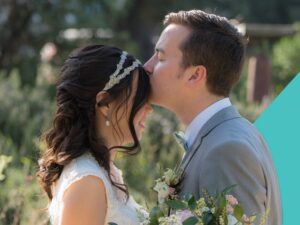The Ultimate Photography Course in Post-Processing & Editing
- Description
- Curriculum
- FAQ
- Reviews
- Grade

‘Very clear teaching style. Comprehensive coverage of LR’s controls. I feel that I can trust what this teacher is telling me.’ – Michael Mackay
‘Engaging instructor, well planned useful content given in a way that keeps you watching and learning.’ – Pamela Drummond
‘Excellent material, great teaching style and pace. Highly recommend!’ – James Ecker
‘Jellis is very responsive both in the course and on his social media platforms. This is my second course of his that I have purchased and I am never disappointed. Well done!’ – Dereck Smith
_______________________________________
*NOTE: This course teaches you how to work with Lightroom Classic, not Lightroom CC.
Some of the bad reviews and ratings are from people who thought this course was about Lightroom CC. They got confused because it looked different than in the course, and thus they gave a bad rating.
The difference between Lightroom Classic and Lightroom CC: Lightroom CC is the new cloud-based photo service of Adobe that works across desktop, mobile, and web. Lightroom Classic is the desktop-focused digital photography product.
In many ways, Lightroom CC is more user-friendly, but it also has fewer tools at its disposal. While this course teaches you how to work with Lightroom Classic and Photoshop, you will have no problem using Lightroom CC if you know how to use all the tools in Lightroom Classic. Both versions have the same tools. Lightroom Classic simply offers more in-depth editing possibilities and tools.
Therefore, Lightroom Classic is also a recommended program for a photographer to know how to use.*
_______________________________________
“Photography is the story I fail to put into words.” – Destin Sparks
You are about to learn how to tell your story even better.
Just like The Ultimate Photography Course for Beginners, this course is focused on digging right into the true essentials of post-processing and editing.
This means the techniques and skills that you will learn here, are the ones that will truly take your photos way beyond simply okay, giving them drama, impact and that wow factor.
All that without countless hours of meaningless and unnecessary rambling on subjects that don’t really matter. Everything that you will learn in this course are techniques and skills I’ve learned from numerous other professional photographers throughout my years in the profession.
I’ve combined all of that information into a well-presented package that not only looks good, but is good – guaranteed.
My mission here with this course is to guide you step by step, slowly but surely through the myriad of possibilities that post processing and editing offers you and your photography.
And don’t worry, for those who are new to Lightroom or Photoshop, there are lectures to help you understand all the necessary tools, and if you have any further questions at all at any stage, you just have to ask, I am here with you on this journey.
Now, brace yourself and get ready to be blown away by just how much better your photos will start to look when using the numerous easy to advanced techniques and skills you are about to learn.
It’s going to be a lot of fun, so please enjoy the course!
An honest review and rating is always appreciated and will help me to make any necessary improvements for the course, as well helping to get more people involved so they too can benefit from the beauty of photography. Many thanks!
_________________________________
The Ultimate Photography Course for Beginners
Not yet mastered the technical and theoretical aspects of your camera or photography? The Ultimate Photography Course for Beginners, my first course, digs into the true essentials in understanding those aspects. It’s a quick, yet in-depth and fun course that is highly recommended, not just by me, but by more than a hundred 5-star reviewers.
Travel Photography for Beginners: Take EPIC Travel Photos
Take the knowledge you have learned in our beginner’s course and continue your journey with this specialization course in travel & adventure photography.
In this exciting, visually stunning and engaging course, I will take you on a true adventure and teach you the many ins and outs of this most thrilling field in photography.
Learn the ins and outs of how to take dramatic and epic photos that capture a feeling, what a good travel and adventure photography kit contains, how to keep yourself and your equipment safe while on the road, what to look for in a quality photography bag, essential accessories to take along, how to earn money with travel and adventure photography, the best way to back up your photos when traveling or out on an adventure, various pro tricks and tips, and so much more!
-
2The Structure of the Course Explained
Welcome to The Ultimate Post Processing and Editing Course! I’m very happy and excited to have you on board. I hope you’ll learn lots, and have some fun in the process. If you would like to connect with me on social media, I always like to get to know my students better! :) Twitter: @JellisV, Instagram: @Jellisvaes, Facebook: Jellis.Vaes
-
3What Is the Difference Between Lightroom CC and Lightroom Classic?
-
4Part 1 - Histogram, The Quick Develop Mode, Keywording, Keyword List
In Part 1 of the Library Module, we’ll learn how to use the Histogram, The Quick Develop Mode, Keywording, and the Keyword List.
-
5Part 2 - The Library Filter Tool and More About Metadata
Part 2 explores in-depth the Library Filter tool and what metadata is and how to add copyright metadata in your photo files.
-
6Part 3 - Sync Settings, Catalog, Folders, Collections, Publishing Services
In Part 3, you’ll learn more about Sync Settings, Navigator, Catalog, Folders, Collections, and Publishing Services.
-
7Part 4 - Learn How to Import and Export your Photos
Part 4 is all about how to import and export your photos in Lightroom.
-
8Part 1 – Spot Removal, Graduated Filter, Radial Filter, Adjustment Brush
In Part 1 of the Develop Module, learn how to use the following tools: Crop Overlay, Spot Removal, Red-Eye Correction, Graduated Filter, Radial Filter, and the Adjustment Brush.
-
9Part 2 – The Basic Panel, Tone Curves, the Powerful HSL Panel, and Split Toning
Part 2 explores the Basic Panel and what each slider does, what Tone Curves does, how to use the powerful HSL panel, and Split Toning.
-
10Part 3 – Detail, Lens Corrections, Transform, Effects, Camera Calibration
In Part 3, learn more about the following panels: Detail, Lens Corrections, Transform, Effects, and Camera Calibration.
-
11Part 4 – Presets, Snapshots, History, Collections, Copy and Paste Button
Learn how to create your own presets in Part 4, and how the following panels work: Snapshots, History, Collections, Copy and Paste.
-
12Part 1 – How to Organize Your Photos Effectively
Part 1 explains file handling and how to organize your photos in Lightroom.
-
13Part 2 – How to Rate & Label Your Photos, and How to Filter Through Them
Here in Part 2, we will learn how to rate and label photos and how you can filter out specific images you are looking for.
-
14Part 3 – In-Depth Explanation of the Catalog and the Various Options
What exactly is a catalog? In Part 4, we will learn about the catalog, along with all the various options.
-
15Part 4 – How to Import a Catalog to Another Computer, How to Merge two Catalogs
It is most important to know how you can move a catalog to another computer, and also how you can merge two catalogs into one. This is what you will learn here in part 4 of workflow.
-
17Part 1 – How to Create Panorama Photos in Lightroom
Part 1 teaches you how to stitch multiple photos together to create a panorama photo in Lightroom.
-
18Part 2 – Field Tips to Take Better Panorama Photos
In Part 2, we’ll talk about some practical tips to take better panorama photos in the field.
-
19Part 3 – How to Create HDR Photos in Lightroom
Learn in Part 3 how to create HDR photos in Lightroom.
-
20Part 4 – How to Take Bracketing Photos & Field Tips to Take Better HDR Photos
Here, we’ll talk about some field tips for taking better HDR photos. Also, in this lecture, you’ll learn how to take bracketing photos.
-
21Part 1 – Optimize your Catalog, Camera Raw Cache, and Graphic Processor
Part 1 shows you how to optimize your catalog, camera raw cache, and the graphics processor.
-
22Part 2 – Smart Previews Explained & How to Build Them
Learn in Part 2 what Smart Previews are and how to build smart previews in Lightroom.
-
23Part 3 - How Smart Previews can Optimize the Performance Speed in Lightroom
In this final lecture, Part 3, you will learn how Smart Previews can help optimize the performance speed of Lightroom. You will also learn the importance of optimizing your hard drive.
-
24Part 1 – How Layers & Layer Masks Work
Once you understand how Layers and Layer Masks work, you can truly start using Adobe Photoshop. Here in Part 1, you’ll learn how they work.
-
25Part 2 – The Various Editing Tools in Photoshop
Let us explore in Part 2 the various tools you’ll need for editing photos in Photoshop.
-
26Part 3 – Opacity & Flow, Dodge and Burn Tool, History, Blend Modes
In Part 3, we will continue learning about the necessary tools for editing photos in Photoshop.
-
28Part 1 – High Pass Sharpening Filter and How to Create Actions in Photoshop
Learn how to create the High Pass Sharpening Filter in Part 1. Along with that, learn how to make Actions in Photoshop.
-
29Part 2 – Smart Sharpen Technique, Tilt-Shift & Gaussian Blur Filter
In the last lesson, Part 2, we’ll learn how to use the Smart Sharpen technique and two other blurring techniques, the Tilt-shift and the Gaussian blur.
-
30Part 1 – Spot Healing Brush, Healing Brush, Clone Stamp Tool
Learn in Part 1 how to use the Spot Healing brush, the Healing brush, and the Clone Stamp tool.
-
31Part 2 – How to Retouch for Flawless Skin with the Frequency Separation
Discover in Part 2 how to create the frequency separation, a most potent retouching technique in Photoshop.
-
32Part 3 – Body Shaping in Adobe Photoshop with the Liquify Tool
We’ll cover in Part 3 how to use the Liquify tool, a most powerful transform tool in Photoshop.
-
33Part 1 – How to Load Brush Packs & How to Create Your own Snowflake Brush
Part 1 shows you how to load installed brush packs in photoshop. And here we will also come to learn how to create your own snowflake brush from scratch.
-
34Part 2 – How to Make Realistic Looking Snowflakes in Photoshop
Let’s continue in Part 2 how to create snowflakes in Photoshop with our own customized brush.
-
35Part 3 – How to Create your own Star Brush to Make Realistic Stars in Your Photo
Part 3 touches on how to create your own star brush to make realistic looking stars in your photos.
-
36Part 1 – How to Create a Sunlight Effect in a Photo
Let’s learn about the first sunlight technique, the sunlight effect, in Part 1.
-
37Part 2 – Learn How to Create Sunlight Rays in a Photo
Let us continue with the second sunlight technique, sunlight rays, in Part 2.
-
38Part 3 – How to Blend Sunlight Rays More Realistic in Your Photo
In Part 3, we’ll continue where we left off from Part 2 and learn how to blend your sunlight rays more realistically in your photo.
-
39Part 4 – Learn How to Create a Sunset Effect in a Photo
Moving on let us learn in part 4 how to create a sunset effect in your photos.
-
40Part 5 – How to Create a Lens Flare in a Photo
Lastly, in Part 5, you’ll learn about the lens flare technique.
-
41Part 1 – How to Stitch Photos Together to Create a Panorama
Learn in Part 1 how to stitch photos together and the different Photo Merge options.
-
42Part 2 – Fixing Incorrect Stitching
By using the Healing brush and the Clone Stamp tool, learn how to fix incorrect stitching in this part.
-
43Part 3 – Rectangular Marquee Tool, Healing Brush, Clone Stamp Tool
Using the Rectangular Marquee Tool, Healing Brush, Clone Stamp Tool in Part 3, we’ll learn more about how these tools can be used to fix incorrect stitching.
-
44Part 4 – How to Match Total Exposures
Using the Match Total Exposures tool, you can match the exposure of your photos.
-
45Part 1 – The Difference Between HDR and Digital Blending
What is the difference between HDR and Digital Blending? Learn this in Part 1.
-
46Part 2 – Learn the Powerful Digital Blending Technique - Luminosity Masks
In Part 2, learn about the powerful digital blending technique, Luminosity Masks.
-
47Part 3 – Blending Exposures with the Luminosity Masks
So, how do we blend exposures with Luminosity Masks? In part 3 we’ll come to discover that.
-
50- Photo Files - All-Around Editing Techniques
-
51Part 1 – Editing in Lightroom – Basic & HSL Panel
With the first photo that we edit and post-process, you will see the complete set of editing and post-processing techniques. Along the way, we will explore what LUTs are, and finally touch upon the various adjustment layers that Photoshop has to offer.
-
52Part 2 – Detail, Split Toning, Camera Calibration
Let’s continue editing our photo in Lightroom using the Detail, Split Toning, and Camera Calibration panel.
-
53Part 3 – Editing in Photoshop – Saving Your File, Auto-Align Layers, Cloning
Now that our photo is in Photoshop, we’ll continue editing. Learn more about how to save your files, how to auto-align layers, cloning, and more.
-
54Part 4 – Healing Brush, Clone Stamp Tool & Customizing Workspace in Photoshop
What we’ll do next is work with the Healing Brush & Clone Stamp tool to fix flaws in our photo. You’ll also learn how to customize your workspace in Photoshop.
-
55Part 5 – Dramatize Colors with the Selective Color Tool
Dramatize the colors in your photo using the powerful Selective Color tool.
-
56Part 6 – Color Balance, Dodge & Burn Tool
Learn to work with the Color Balance and the Dodge and Burn tool in Photoshop.
-
57Part 7 – Creating a Vignette and Using LUTs
Ever wonder how to create a vignette in Photoshop? Here, you’ll learn how to do so, and also learn about LUTs.
-
58Part 8 – How to Make Your Photos Cinematic using LUTs
LUTs work like filters, and with one click, you can instantly make your photos that much more cinematic.
-
59Part 9 – Applying a Sunset Technique in a Photo
Let us apply one of the sunset techniques we have learned in Section 2, Learn Adobe Photoshop: the sunset technique.
-
60Part 10 – Working with Blending Modes & Sharpening our Photo
Learn how to work with blending modes while we finish Part 10 with a lesson on sharpening your photo with the Smart Sharpen tool.
-
61Part 11 – Blurring our Photo, New Sunlight Technique and Final Touches
Discover a new sunlight technique while we finish editing the photo.
-
62Photo File - Portrait Retouching Techniques
-
63Part 1 – How to Turn a Terrible Photo into a Good-Looking One
Come to learn in this photo how to fix red skin, enhance eyes, remove harsh shadows under the eyes, fix skin corrections, add clouds in a picture, and a whole lot more. Let’s begin!
-
64Part 2 – Fixing Hair, Removing Blemishes, Correcting Skin Color
See how to fix hair, remove blemishes, and correct skin color in a photo.
-
65Part 3 – Dodge & Burn Tool, Photo Corrections
We’ll continue using the Dodge and Burn tool and applying some more photo corrections.
-
66Part 4 – Enhancing Colors, Selective Color & Color Balance
Time to enhance our photos using the Selective Color and Color Balance functions.
-
67Part 5 – LUTs, Cropping, Enhancing Eyes
In Part 5, you’ll learn how to enhance the eyes in a photograph.
-
68Part 6 – Brighten Pupils & Change Eye Color
Find out how you can brighten the pupils of the eyes and deepen eye colors.
-
69Part 7 – Adding Realistic Clouds to a Sky
By using a customized brush, learn how to add clouds in a sky. In the pdf file attached to this lesson, you can download the brush for free.
-
70Part 8 – Smoothing Skin with Frequency Separation
Using the powerful frequency separation technique, we can smooth the skin of a subject.
-
71Part 9 – Blur, High Pass Filter and Finishing Touch
Here in Part 9, we’ll do some finishing touches by applying a blurring technique and using the high pass filter to draw out more details in the eyes.












